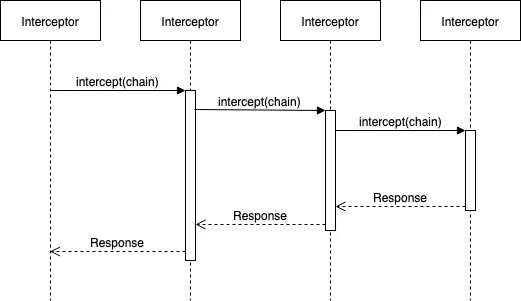308 字
2 分钟
okhttp 中的责任链模式
- 之前看到有个人说:牛逼的框架一般都能用一句话概括它的原理或者特点
- okhttp 采用责任链设计模式,就单凭这一个特点就能让它脱颖而出
- 我一开始以为是分开拦截请求和返回的,但是那样其实只是装饰者模式,就没有办法实现在某一个拦截器中直接中断执行并返回,事实拦截器只有一个方法:
interface Interceptor { @Throws(IOException::class) fun intercept(chain: Chain): Response }- 那是怎么实现的呢,看看这个 Chain
interface Chain { fun request(): Request @Throws(IOException::class) fun proceed(request: Request): Response //... }- 它的实现是 RealInterceptorChain,看看它的 proceed 方法,真的非常简单:
fun proceed(request: Request, transmitter: Transmitter, exchange: Exchange?): Response { // ... // 构建下一个链,有点像递归,两个方法相互调用对方 val next = RealInterceptorChain(interceptors, transmitter, exchange, index + 1, request, call, connectTimeout, readTimeout, writeTimeout) val interceptor = interceptors[index] // 执行当前的拦截器,如果拦截器不想拦截,继续执行下一个拦截器 // 必须在 intercept 的最后调用 return chain.proceed(...) // 如果需要拦截则不能调用 chain.proceed(...),需要自己构造一个 // Response 返回 val response = interceptor.intercept(next) ?: throw NullPointerException( "interceptor $interceptor returned null") // ... return response }

